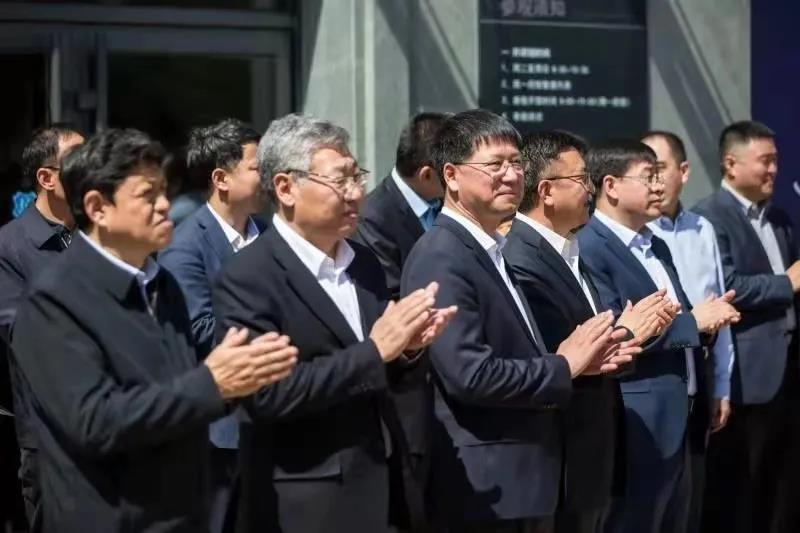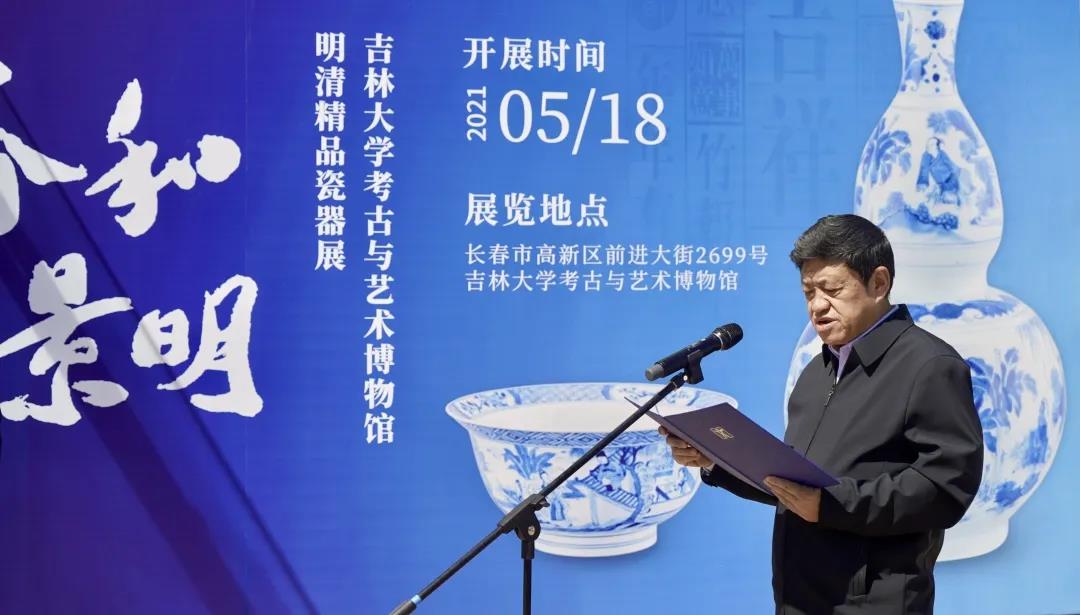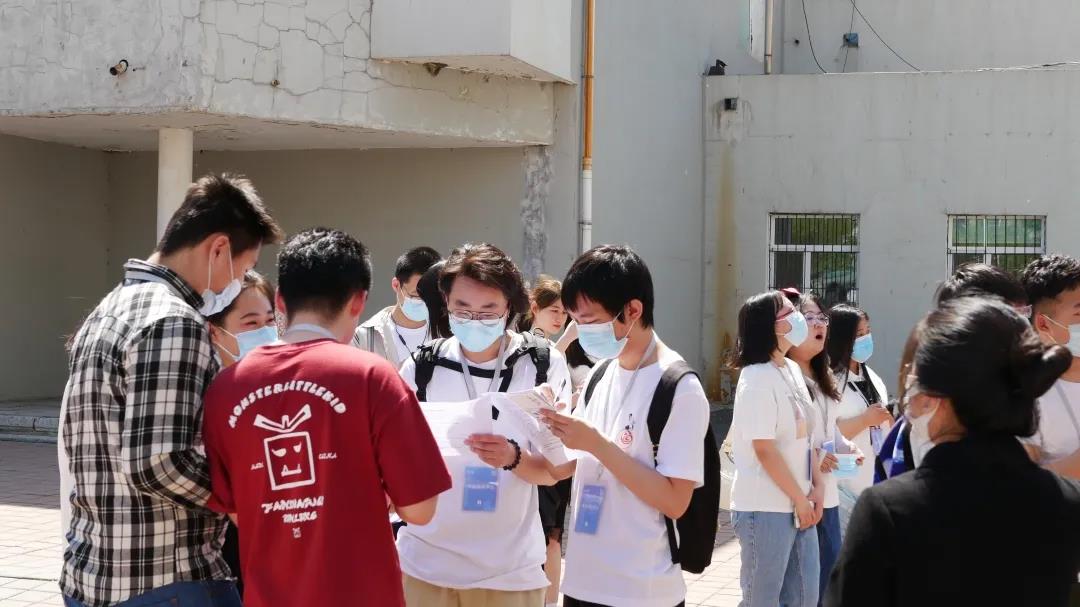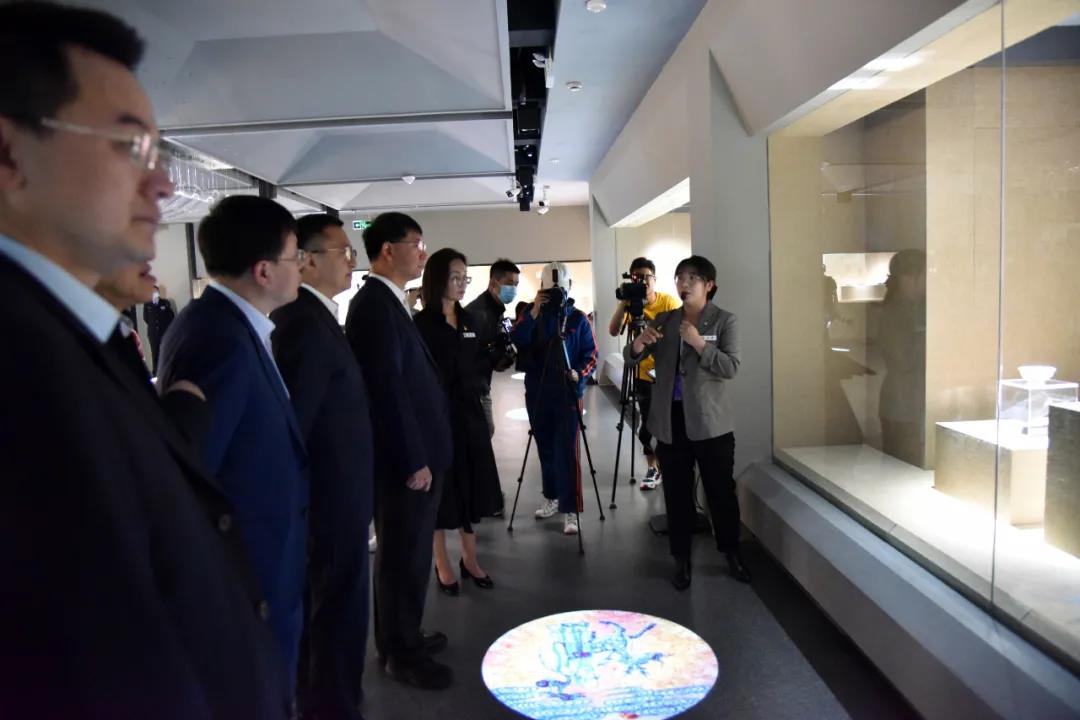At 9:30 on May 18th, the "Chun he jing ming(春和景明)- Ming and Qing Fine Porcelain Exhibition" hosted by the Jilin University Museum of Archaeology and Art was officially launched.
May 2021 is the first spring of Jilin University Archaeology and Art Museum since it was established at the department level. After more than half a year of preparation for this porcelain exhibition, nearly a hundred pieces of fine porcelain are exhibited in the collection. The blue and white porcelain, monochromatic glazed porcelain and decorative porcelain are divided into three units: "Chunsheng(春生)", "Chunnuan(春暖)", and "Chunyan(春妍)". Together with ancient poems, it showcases the beauty of classical art and promotes Chinese civilization.


Zhang Xi, President of Jilin University, and teachers and students from the School of Archaeology attended the ceremony.

Tang Miao, deputy curator of the Archaeology and Art Museum of Jilin University and deputy dean of the School of Archaeology, presided over the opening ceremony.

Professor Zhao Binfu, curator of the Archaeology and Art Museum and dean of the School of Archaeology, delivered a speech. Dean Zhao mentioned that museums are an important carrier of human society’s history and civilization, and an important cultural venue for understanding the past, thinking about the present, and looking forward to the future. The Archaeology and Art Museum of Jilin University is positioned to be based on collections and research, centered on exhibitions, focus on the educational function, eliminate information islands, and form a center with the needs of the museum business, supported by continuous innovation of technical means, and teaching and scientific research, taking teaching and scientific research as the radiation function, the new museum development model combining online and offline will create a model and intelligent museum, show the charm of Jilin University, and promote the construction of "double first-class" disciplines.



During the activity, the students signed on the posters and took photos together, filled out questionnaires for the audience at the Archaeological and Art Museum, and consulted about the new exhibition. The atmosphere was enthusiastic.